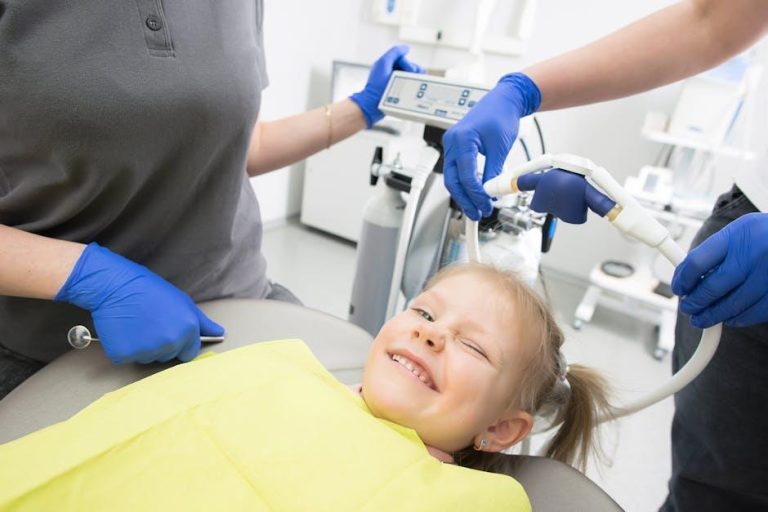1 in 3 Kids Has Dental Problems, Poll Finds – U.S. News & World Report
Published by U.S. News & World Report
Introduction
Dental health is a cornerstone of overall wellbeing, especially for children. Yet, a recent poll reveals a concerning statistic: 1 in 3 kids in the United States suffers from dental problems. This highlights a growing pediatric oral health issue that can impact children’s daily lives, confidence, and long-term health. In this comprehensive article, we’ll delve into the most common dental problems faced by kids, the causes behind them, recent poll findings, and practical tips for prevention and care.
Understanding the Scope: What the Poll Revealed
The latest U.S. News & World Report poll surveyed thousands of parents nationwide, unveiling that approximately 33% of children have experienced at least one dental issue in the past year. These issues range from cavities, gum disease, to more severe dental complications.
Key statistics from the poll include:
- Tooth decay remains the most prevalent problem, affecting over 25% of children surveyed.
- Early signs of gum inflammation were reported in nearly 10% of children.
- Dental pain or discomfort causing school absences was reported in about 5% of cases.
This data sheds light on the urgent need for improved pediatric dental care access and education across communities.
Common Pediatric Dental Problems Explained
1. Tooth Decay (Cavities)
Tooth decay is the most frequent chronic disease among children. It occurs when acids produced by bacteria in the mouth erode the tooth enamel, leading to cavities.
2. Gum Disease (Gingivitis)
Gum disease usually starts with inflammation and bleeding gums. If untreated, it can progress and damage the supporting structures around teeth.
3. Dental Trauma and Injuries
Accidental injuries such as chipped or knocked-out teeth can affect kids during play or sports activities.
4. Malocclusion (Misaligned Teeth)
Misalignment issues may not always be dental diseases but can impact oral function and aesthetics, often requiring orthodontic intervention.
Why Are Dental Problems So Common in Kids?
Several factors contribute to this high prevalence of dental issues in children:
- Poor oral hygiene practices: Inconsistent brushing and flossing increase plaque buildup.
- High sugar consumption: Frequent intake of sugary snacks and beverages feed harmful oral bacteria.
- Lack of routine dental visits: Infrequent professional checkups delay diagnosis and treatment.
- Limited access to dental care: Socioeconomic and geographic barriers often prevent timely care.
- Insufficient parental awareness: Parents may underestimate the importance of early dental care.
Poll Data at a Glance
| Dental Problem | Percentage of Kids Affected | Common Symptoms |
|---|---|---|
| Tooth Decay (Cavities) | 25% | Tooth pain, sensitivity, visible holes |
| Gum Disease (Gingivitis) | 10% | Red, swollen gums; bleeding during brushing |
| Dental Trauma | 7% | Chipped or loose teeth |
| Malocclusion (Misalignment) | 15% | Irregular bite, crooked teeth |
Benefits of Early Dental Care
Addressing pediatric dental problems early offers numerous advantages for children and their families, including:
- Prevention of advanced dental diseases: Early treatment stops problems from worsening.
- Improved overall health: Healthy teeth impact nutrition, speech, and confidence.
- Reduced dental-related school absences: Prevent pain and complications causing missed class time.
- Lower treatment costs: Preventive care is much more affordable than major restorative procedures.
Practical Tips for Parents: Protect Your Child’s Smile
Parents can play a vital role in maintaining their children’s oral health. Here are some expert-backed tips:
- Start dental hygiene early: Begin cleaning your baby’s gums before teeth emerge and brush teeth twice daily as soon as they appear.
- Limit sugary snacks and drinks: Encourage healthy eating habits to reduce cavity risk.
- Schedule regular dental visits: Start dental checkups by age one and maintain biannual visits.
- Promote fluoride use: Ensure your child uses fluoride toothpaste or get fluoride treatments as advised by dentists.
- Make brushing fun: Use colorful toothbrushes, songs, or rewards to motivate consistent brushing.
Case Study: Overcoming Pediatric Dental Problems
Emma, a 7-year-old from Ohio, struggled with frequent toothaches due to multiple cavities. Her mother, initially unaware of the significance of early dental care, enrolled Emma in a local dental program after learning about the poll findings.
Through routine dental visits, professional cleanings, and dietary changes, Emma’s dental health improved drastically within six months. This case underscores the power of parental involvement guided by informed health data.
First-Hand Experience: A Parent’s Perspective
“When I first learned that so many kids suffer from dental problems, I checked my own son’s teeth more carefully and took him to the dentist. The routine visits and small lifestyle changes really made a difference. His confidence with smiling has grown, and he no longer complains about tooth pain.” – Sarah M., Mother of two
Conclusion
The revelation that 1 in 3 kids in the U.S. has dental problems is a call to action for parents, caregivers, and communities. By understanding common pediatric dental issues, recognizing risk factors, and implementing preventive strategies, we can empower children to enjoy healthier smiles and brighter futures.
Dental care for kids is not just about healthy teeth today — it’s an investment in their lifelong well-being. Stay informed, take proactive steps, and encourage a culture of oral health that starts at home.


